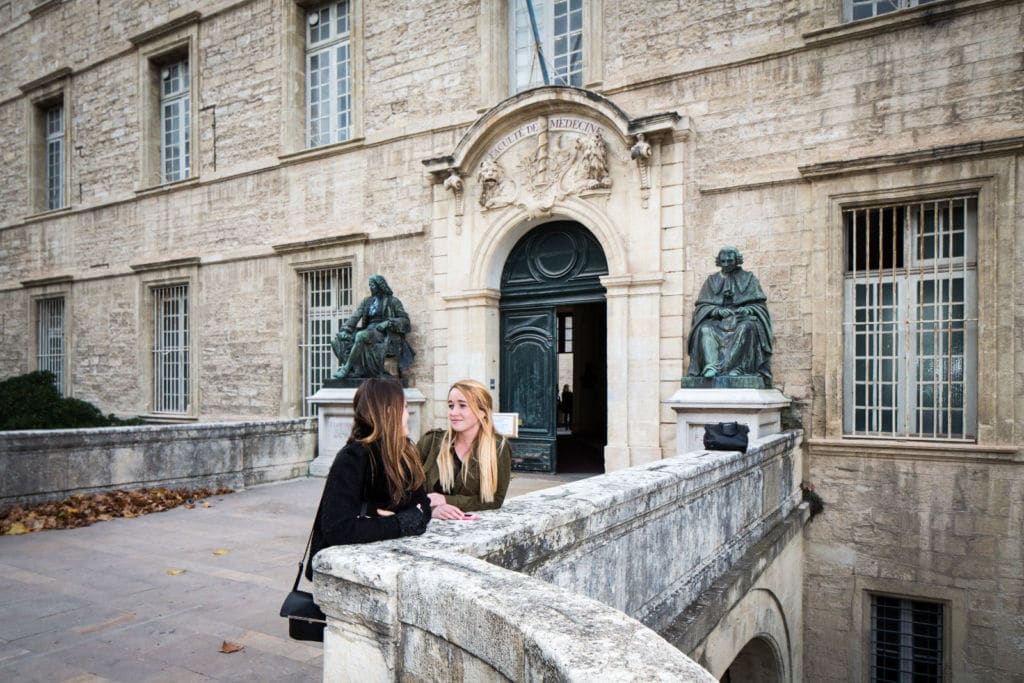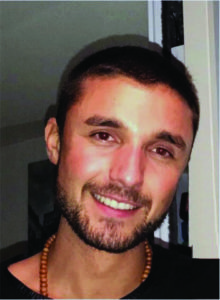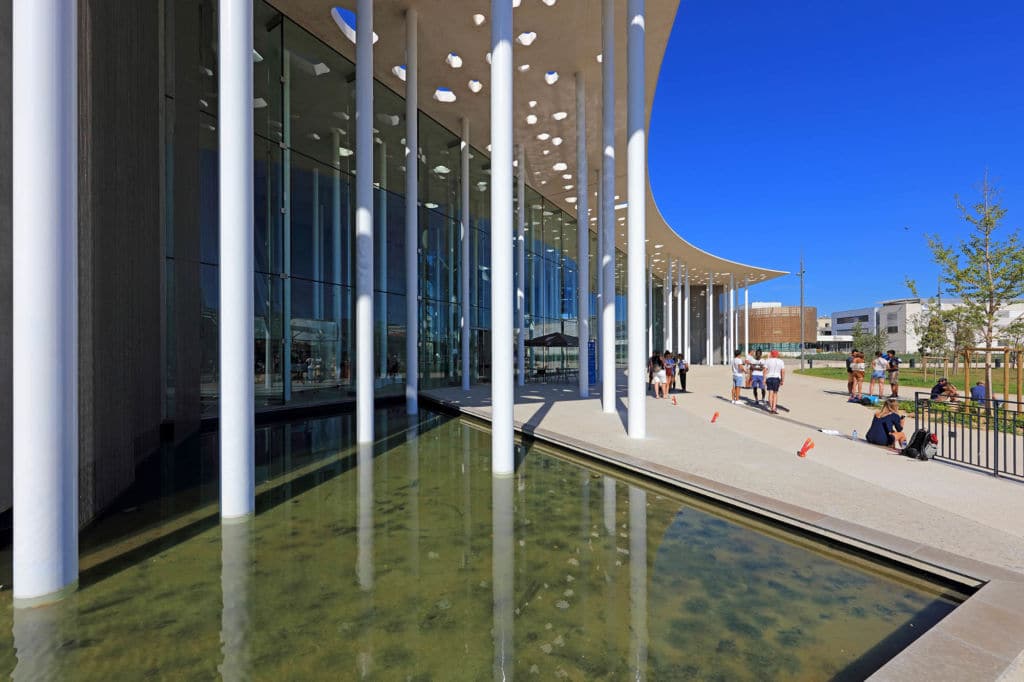The Faculty of Medicine at a crossroads
A new page is turned for the faculty with theopening of new premises on the Arnaud de Villeneuve campus. In addition to its primary mission of training future doctors, the institution is increasingly supporting healthcare professionals in their growing need for continuing education.

Photo © David Richard / Transit
It is one of the jewels in the crown of a university with a rare heritage. Every day, tourists from all over the world flock to the historic Faculty of Medicine building. Some come to admire the dress of a certain Rabelais, others to stroll the aisles of the Anatomy Conservatory or immerse themselves in the drawings of the Musée Atger, which brings together a rare collection of drawings by European masters, and others to enjoy the freshness of the Jardin des plantes, created at the end of the 16th century to support the training of future doctors and apothecaries.
At the bedside of a changing practice
While the historic center remains the cradle of Montpellier's medical profession, students, staff and teachers have discovered a new working environment since the start of the new academic year. Located just a stone's throw from the hospitals, on the Arnaud de Villeneuve campus, the new flagship of Montpellier's medical school is entirely focused on educational innovation. A simulation platform equipped with patient robots, drama workshops for training in the patient/doctor relationship... Everything is done to respect the fundamental principle: "never the first time on the patient".
In addition to the 6,000 students hosted at one of the faculty's two sites, in Nîmes and Montpellier, the faculty is responsible for the continuing education of almost 3,000 healthcare professionals, including doctors, midwives and nurses, all of whom have a vital role to play, according to Michel Mondain: "The specific nature of healthcare is that it is constantly evolving, so it is essential to offer appropriate training to these professionals, whether they are doctors or not". For the dean, the faculty must assert itself as a "home for healthcare professionals". Half a floor of the new faculty will be reserved for CHU teams.
The birth of a Health Campus at Arnaud de Villeneuve
The building, designed by architect François Fontès, is part of an ecosystem that is gradually becoming a veritable health campus: in addition to the hospitals, the site is home to several leading biology-health research centers, as well as the University Institute for Clinical Research and the Medical Teaching Unit (UPM). This proximity is rich in potential and heralds fruitful exchanges.
Exchanges between research, clinical practice and training, but also exchanges between disciplines: the faculty intends to strengthen collaboration with its neighbors on the Saint Priest campus, focused on digital sciences, and with STAPS and its Euromov center, dedicated to the study of human movement. It is at the crossroads of these different disciplines that the history of an eight-century-old university will be written.
A student's view of the new faculty
Sébastien Cuozzo, Vice-Dean Student
 "What will the new faculty change? First of all, we'll be able to take advantage of brand-new facilities, thanks to the development of high technology. The main new feature is obviously the 4th and 5th floors, which are dedicated in particular to simulation for externs (2nd cycle) and interns (3rd cycle), with reproductions of operating theatres, delivery rooms and latest-generation robots. The second important point is the health campus dimension. This will make the interface between courses and internships much smoother.
"What will the new faculty change? First of all, we'll be able to take advantage of brand-new facilities, thanks to the development of high technology. The main new feature is obviously the 4th and 5th floors, which are dedicated in particular to simulation for externs (2nd cycle) and interns (3rd cycle), with reproductions of operating theatres, delivery rooms and latest-generation robots. The second important point is the health campus dimension. This will make the interface between courses and internships much smoother.
What's special about our studies is that from 3rd year onwards, every morning we're on placement at the hospital, then in class from 1 or 2 pm. In the past, this meant having to take public transport to and from the hospital, whereas now we can go from the classroom to the hospital in 10 minutes. The greater proximity with our teachers will also enable us to react much more quickly and improve our exchanges.
Key figures
- 9109 students (including nearly 3000 in continuing education)
- 416 Professors
- 150 IATS staff
- 3 sites (Montpellier center, Arnaud de Villeneuve, Nîmes)
- 1220: First statutes granted by the Church to the "universitas medicorum
- 1593: Creation of France's first Jardin des Plantes in Montpellier
- 1795: Move to Saint-Benoît monastery, former bishopric
- 2017: Inauguration of the new Faculty on the Arnaud de Villeneuve campus
The initiative: tutoring for equal opportunity in PACES
MCQs, course reminders, mock exams, methodological advice...
The health tutoring program, run by students in higher education in medicine, pharmacy, odontology or maieutics, brings together almost 250 tutors trained in the basics of teaching. Their role is to support students enrolled in the Première Année Commune aux Études de Santé (PACES), a highly selective entrance examination. And the results are clear: "a student who has benefited from tutoring sees his or her chances of passing the entrance exam multiplied by 6, a figure equivalent to that of students who have attended a preparatory course", says Mathieu Bauer, President of the FED, which brings together the various health tutoring associations. Funded by the university, the scheme mobilizes teachers every year to train tutors.
